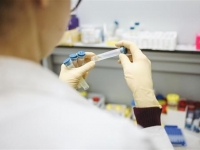Health
Spanish healthcare is on the verge of saturation in some areas
Due to COVID-19
USPA NEWS -
The Spanish health sector has warned that emergency services in the country's hospitals are on the verge of collapse, due to the increase in the number of people infected by COVID-19. Doctors and nurses are already openly talking about a second wave of the pandemic, while more than 100,000 people are confined in 40 areas of Spain.
Spain on Tuesday exceeded the figure of 30,000 deaths since the pandemic began and 600,000 infected. They are official figures, although everything seems to indicate that they are not real because they do not coincide with the official death records. In these registries, the number of deaths is almost 25,000 more people than in the same periods of previous years. A gap that gives reasons for the opposition in Parliament to harass the Government, demanding that it give the real numbers of infected and deceased. The Government, however, insists that the increase in the number of infected is due to the generalization of PCR tests for the detection of positives for COVID-19. And they point out that the death figures include confirmed cases of death from coronavirus.
Madrid, Catalonia, Andalusia and the Basque Country are the regions with the highest number of cases, but the second wave of the pandemic affects all of Spain again. In Madrid, especially, hospital emergencies are on the verge of saturation, according to health workers. In this region, which next Friday will tighten the restrictions applied to its population, 174,680 infections have been detected since the confinement decreed by the Spanish Government was lifted between March 14 and June 22. Of these, 8,925 have died.
Catalonia follows closely, with 123,393 confirmed cases and 5,780 deaths. Further afield, in Andalusia 43,678 cases and 1,614 deaths have been confirmed. And in the Basque Country, 37,883 infections have been confirmed and 1,596 patients with coronavirus have died. But in all Spanish regions there are cases. As happened during the first wave of the pandemic, the distribution of the virus is not the same in all territories. And this affects the operation of hospital emergencies. In primary care, doctors warned last week that they are overwhelmed, especially in the most affected regions. And in the emergency services of the hospitals of Madrid and Catalonia there is beginning to be saturation.
Unlike the first wave of the pandemic, when 80% of the patients admitted to hospitals needed assisted ventilation because they had severe pneumonia, in this second wave the symptoms are milder. Despite this, the Government insists that the guard should not be lowered and the established norms must be followed to avoid contagions: maintain social distance, always wear a mask, avoid crowds of people and maintain constant cleaning of the hands. It is important, they remember, because the Russian State Véktor Center for Research in Virology and Biotechnology warns that the coronavirus could be transmitted up to 90 days after infection, which means that people who have been cured and asymptomatic carriers are potential sources of contagion.
So far, more than 100,000 Spaniards are confined to their homes, neighborhoods or cities, to avoid contagion, as a significant increase in the number of cases has been detected in those places and social contagion has been proven. Today, there are forty areas throughout Spain that are confined. But the number increases. And doctors warn that, with the arrival of autumn, Spain will enter the seasonal flu season and emphasize that, as flu and coronavirus share symptoms, the identification of COVID-19 could be more difficult.
Spain awaits the promised vaccine. The one tested by the Astra Zeneka laboratory and the University of Oxford is the EU's favorite and, of this, 3,000,000 doses will reach Spain. They will be aimed at risk groups. But the majority of the population will not be vaccinated and will have to fight the virus with the prevention measures recommended by the health authorities.
Liability for this article lies with the author, who also holds the copyright. Editorial content from USPA may be quoted on other websites as long as the quote comprises no more than 5% of the entire text, is marked as such and the source is named (via hyperlink).






